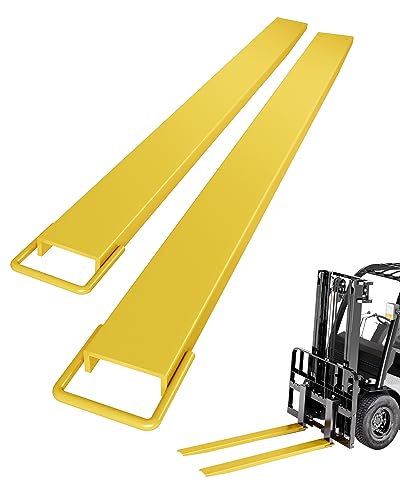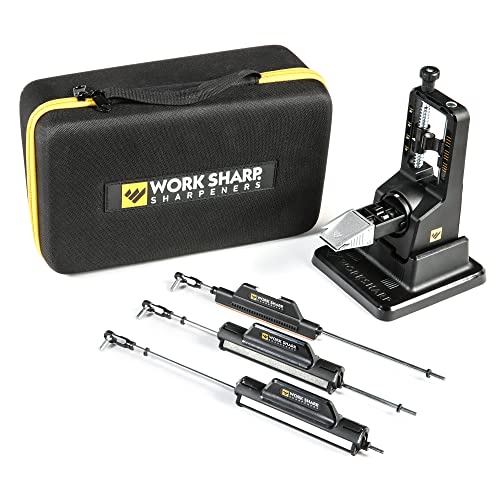
When operating a forklift, it is not uncommon to encounter loads that are too long to be safely transported using the standard forks. In these cases, forklift fork extensions can be a useful tool to increase the overall length of the forks, allowing for safer and more efficient material handling.
Making forklift fork extensions can be a cost-effective solution compared to purchasing new longer forks. Additionally, creating your own extensions allows for customization to fit specific load requirements.
Here are the steps to make forklift fork extensions:
- Measure the forks: Start by measuring the length, width, and thickness of your existing forklift forks. This will help determine the dimensions for the extension.
- Select the material: Choose a strong and durable material for the fork extensions, such as steel or aluminum. Consider the weight capacity of the forklift and the loads it will be lifting.
- Cut the material: Use a saw or other appropriate cutting tool to cut the material to the desired length for the extensions. Make sure to cut the material straight and smooth.
- Weld the extensions: If using steel, secure the extensions onto the existing forks by welding them together. Ensure that the extensions are aligned properly and securely attached.
- Test the extensions: Once the extensions are welded, test the forklift to ensure they are securely attached and functioning properly. Make any necessary adjustments if needed.
Please note that before making any modifications to a forklift or its attachments, it is important to consult the manufacturer’s guidelines and seek professional advice if necessary. Safety should always be the top priority.
By following these steps, you can create your own forklift fork extensions and enhance the versatility of your forklift, allowing for easier and safer handling of long or oversized loads.
Choosing the right forklift fork extensions
When it comes to forklift fork extensions, choosing the right ones is crucial to ensure the safe and efficient operation of your forklift. Here are some factors to consider when selecting the right forklift fork extensions:
Type of load
The type of load you typically handle with your forklift is an important consideration. Forklift fork extensions come in various designs and lengths, each suitable for different types of loads. If you frequently handle long or oversized loads, consider fork extensions with a longer length to provide enough support and stability.
Weight capacity
Another crucial factor to consider is the weight capacity of the forklift fork extensions. Ensure that the extensions you choose can handle the maximum weight of your loads. It’s always better to choose fork extensions with a higher weight capacity than you anticipate needing to account for any potential increases in load weights in the future.
Material
The material of the forklift fork extensions can significantly impact their durability and longevity. Common materials include steel and aluminum. Steel extensions are generally stronger and more durable, making them suitable for heavy-duty applications. Aluminum extensions, on the other hand, are lighter in weight and more corrosion-resistant, making them ideal for environments where weight is a concern or where exposure to moisture is common.
Length adjustment
Consider whether you need forklift fork extensions with adjustable lengths. Some fork extensions offer the flexibility to adjust their length to accommodate different load sizes. This feature can be particularly useful if you handle a wide range of load sizes with your forklift.
Installation
Lastly, consider the installation process of the forklift fork extensions. Ensure that the extensions are easy to install and compatible with your forklift’s existing forks. It’s recommended to choose extensions that can be securely attached and locked onto the forklift forks to prevent any accidents or disconnections during operation.
By carefully considering these factors, you can choose the right forklift fork extensions that best suit your specific needs and ensure the safety and efficiency of your forklift operations.
Measuring forklift fork extensions
Before ordering or making fork extensions for your forklift, it is crucial to measure your existing forks accurately. These measurements will ensure that the extensions you purchase or build will fit your forklift properly and provide secure lifting and stability. Here are the steps to measure your forklift forks for extensions:
- Length measurement: Start by measuring the length of your forklift forks. Use a tape measure to measure from the tip of one fork to the tip of the other. Make sure to measure the actual length of the forks, excluding any attachments or extensions that may already be added.
- Width measurement: Next, measure the width of your forklift forks. This measurement is crucial to ensure that the fork extensions you order or build will fit snugly onto your existing forks. Measure the width from one outer edge of the fork to the other.
- Thickness measurement: Measure the thickness of your forklift forks. This measurement is essential to determine the maximum size of the openings in the fork extensions. Use a caliper or a tape measure to measure the thickness accurately.
Note: It is important to measure each fork individually, as forks can sometimes have slight variations in length or width.
Once you have taken accurate measurements of your forklift forks, you can proceed with ordering or constructing fork extensions that match these dimensions. Remember to double-check your measurements before making a purchase or starting a DIY project, as accuracy is vital for a safe and reliable fit.
Installing forklift fork extensions
Installing fork extensions on your forklift is a relatively simple process that requires a few basic tools and some caution. Follow these steps to ensure a safe and secure installation:
1. Safety first
Before you begin, make sure you have the necessary safety equipment, such as gloves and safety glasses, on hand. It’s also important to park the forklift on a flat, level surface and engage the parking brake to prevent any movement during the installation.
2. Measure and align
Start by measuring the width of your forklift forks to ensure you choose the correct size of fork extensions. Once you have the right size, align the extensions with the forks, making sure they are centered and sit flush against the back of the forks.
3. Secure the extensions
Use the provided bolts and nuts to secure the extensions to the forks. Insert the bolts through the pre-drilled holes on the extensions and the holes in the forks. Tighten the nuts securely using a wrench or socket set, ensuring that the extensions are firmly attached to the forks.
4. Test for stability
Once the extensions are securely in place, carefully test the stability of the forklift by lifting and lowering a load. Pay close attention to any wobbling or shifting of the extensions during this test. If you notice any instability, immediately stop using the forklift and seek professional assistance to resolve the issue.
Remember to always consult the manufacturer’s instructions and guidelines for your specific forklift model when installing fork extensions. Following these steps will help ensure a safe and successful installation, allowing you to extend the capabilities of your forklift.
Maintaining forklift fork extensions
Proper maintenance of forklift fork extensions is essential to ensure their longevity and safe operation. Follow these guidelines to maintain your forklift fork extensions:
1. Inspect regularly: Regularly inspect the fork extensions for any signs of damage or wear. Look for cracks, bending, or any other visible defects. If any issues are found, replace or repair the extensions immediately.
2. Clean regularly: Clean the fork extensions regularly to remove dirt, debris, and other contaminants. This will help prevent the buildup of corrosive substances that can damage the extensions over time.
3. Lubricate moving parts: Apply lubricant to the moving parts of the fork extensions, such as the slide channels, to ensure smooth and frictionless operation. This will help prevent excessive wear and maintain proper functionality.
4. Store properly: When not in use, store the fork extensions in a clean and dry area. Avoid storing them in areas with high humidity or extreme temperatures, as this can accelerate corrosion and degradation.
5. Train operators: Provide proper training to forklift operators on the correct usage and maintenance of fork extensions. This will help prevent misuse and ensure that operators are aware of the necessary maintenance steps.
6. Follow manufacturer’s guidelines: Always follow the manufacturer’s instructions and recommendations for maintenance and usage of the fork extensions. This will ensure that you are following the best practices and guidelines specific to your particular set of fork extensions.
By following these maintenance guidelines, you can ensure the longevity and safe operation of your forklift fork extensions. Regular inspections, cleaning, lubrication, proper storage, operator training, and adherence to manufacturer’s guidelines are key in keeping your fork extensions in good working condition.
Ensuring Safety with Forklift Fork Extensions
When using forklifts with fork extensions, it is crucial to prioritize safety to prevent accidents and injuries. Here are some essential tips for ensuring safety when using forklift fork extensions:
1. Proper Inspection:
Before using forklift fork extensions, carefully inspect them for any damages or defects. Look for cracks, bends, or any signs of wear and tear. Ensure that the fork extensions are the correct size and properly fit the forklift forks.
2. Correct Installation:
Follow the manufacturer’s instructions for installing the fork extensions. Improper installation can lead to instability and accidents. Ensure that the extensions are securely attached to the forklift forks and that there is no movement or wobbling.
3. Weight Capacity:
Always be aware of the weight capacity of both the forklift and the fork extensions. Overloading the forklift or the extensions can result in tipping, loss of control, or damage to the equipment. Stick to the recommended load limits to maintain stability and prevent accidents.
4. Load Distribution:
When using fork extensions, distribute the load evenly along the forks and extensions. Keep the load as close to the forklift’s carriage as possible to maintain stability. Avoid overhanging loads or unevenly distributed weight that can cause the forklift to become unstable.
5. Operator Training:
Ensure that forklift operators are properly trained and certified to use forklifts with fork extensions. Proper training includes understanding the risks associated with using extensions and knowing how to operate the forklift safely with extended forks.
6. Clear Visibility:
Make sure the operator has clear visibility when using fork extensions. Ensure that the load does not obstruct the operator’s view and that the forks and extensions do not block the operator’s line of sight. Proper visibility is essential for safe maneuvering and avoiding collisions.
7. Regular Maintenance:
Maintain the forklift and fork extensions regularly to ensure their safe operation. Perform routine inspections, lubricate moving parts, and address any issues promptly. Regular maintenance helps prevent equipment failure and reduces the risk of accidents.
By following these safety tips, you can ensure a safer working environment when using forklift fork extensions. Prioritizing safety not only prevents accidents but also helps prolong the lifespan of the equipment, saving you from costly repairs or replacement.










